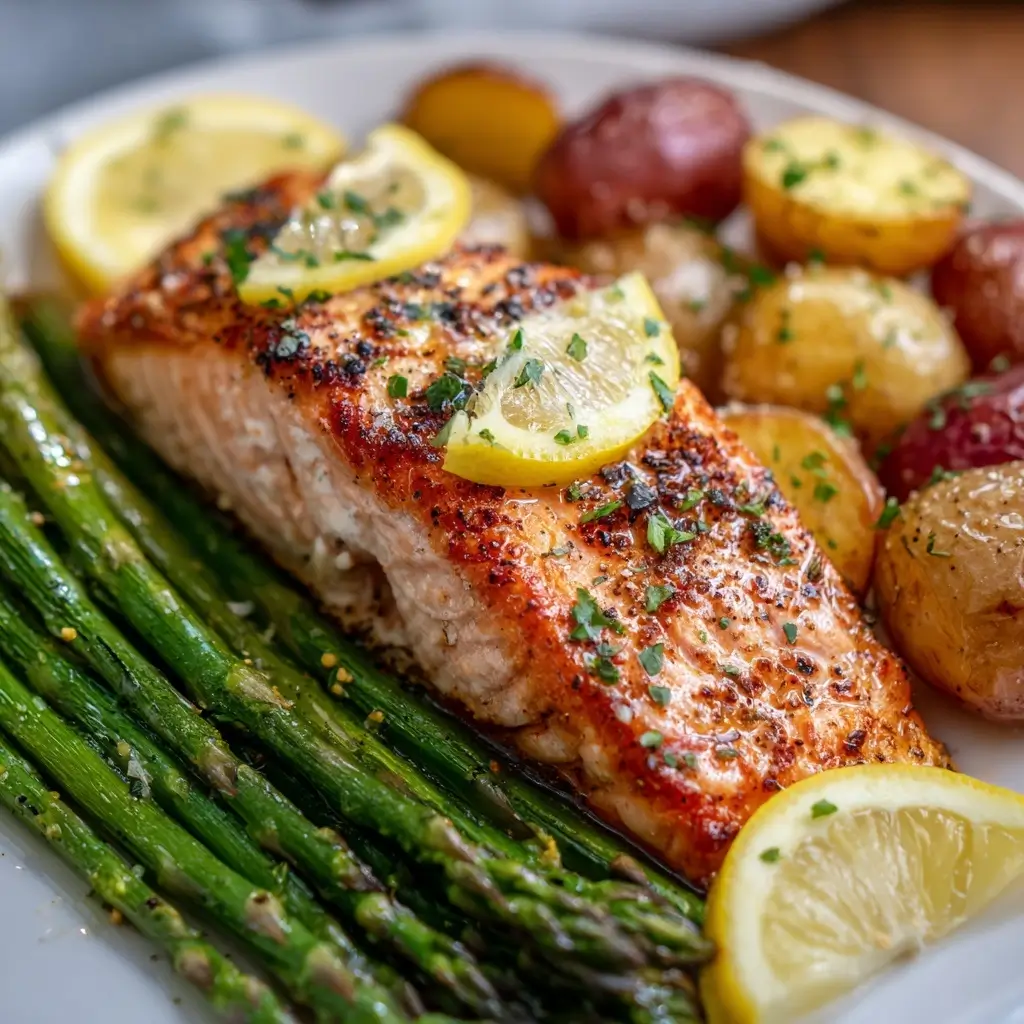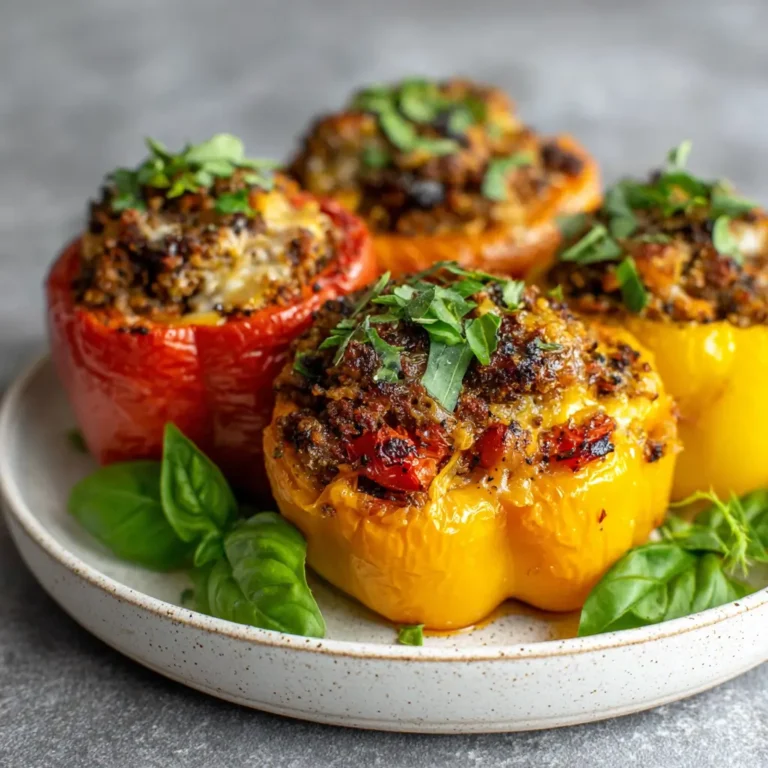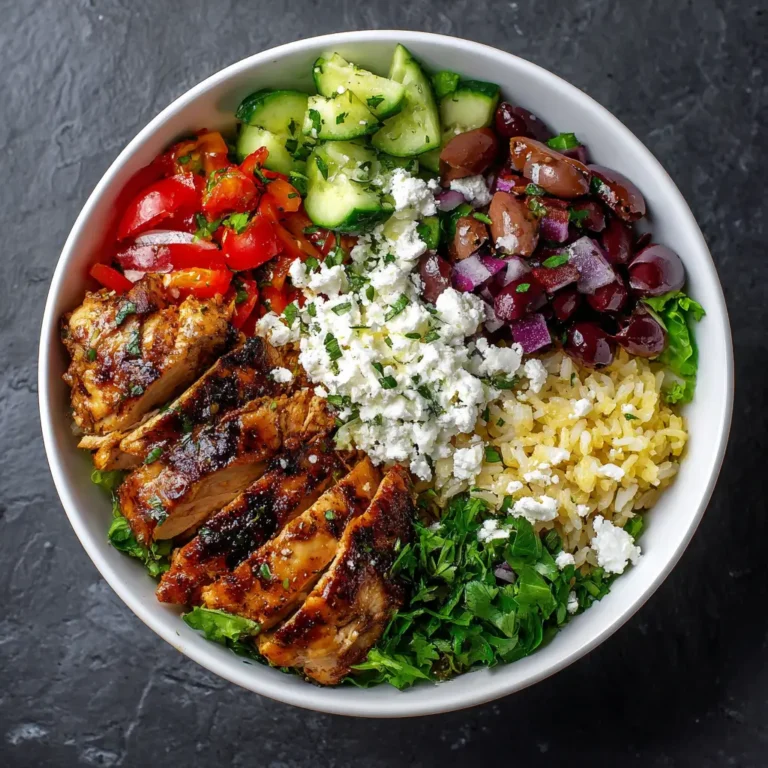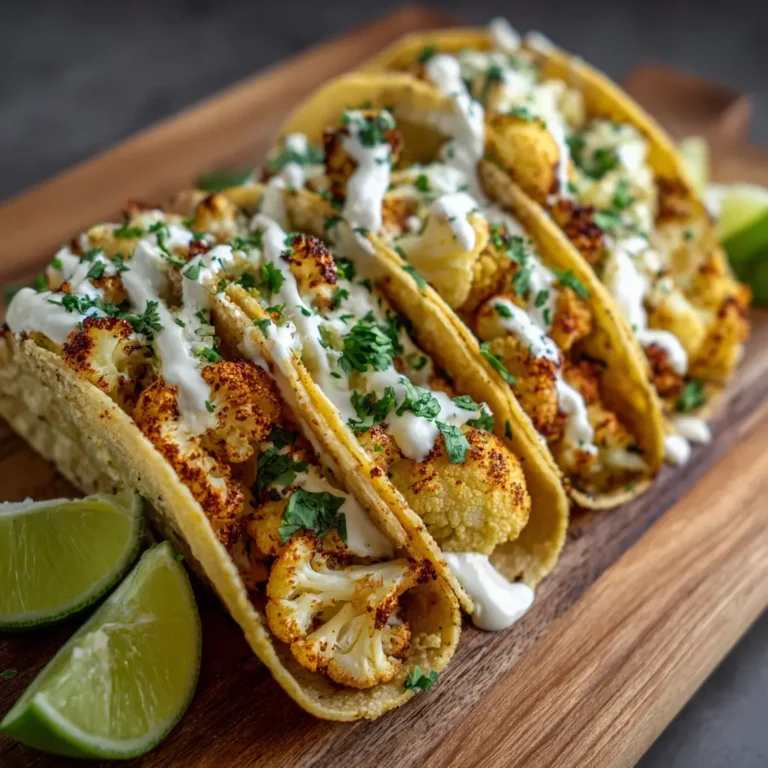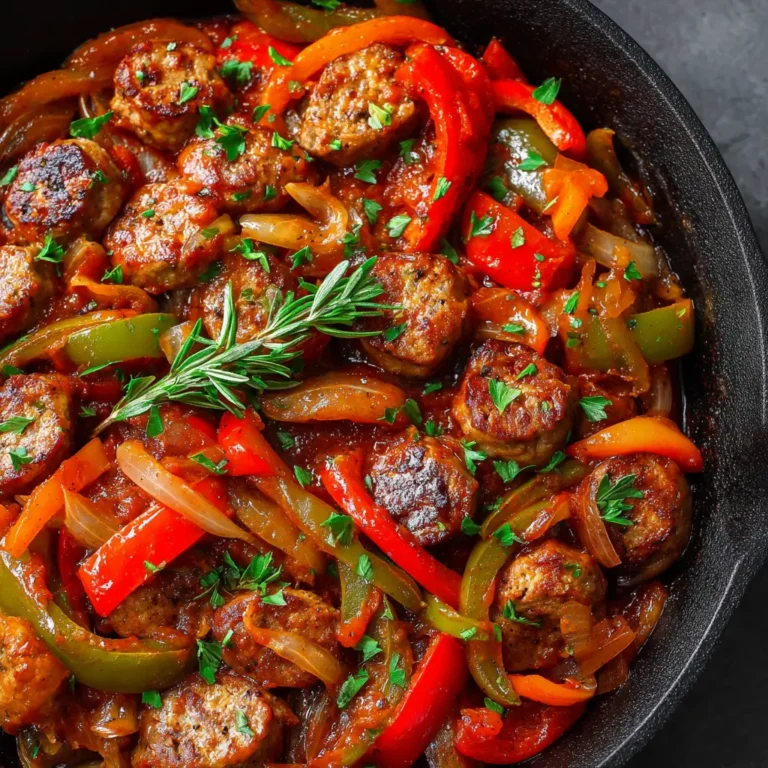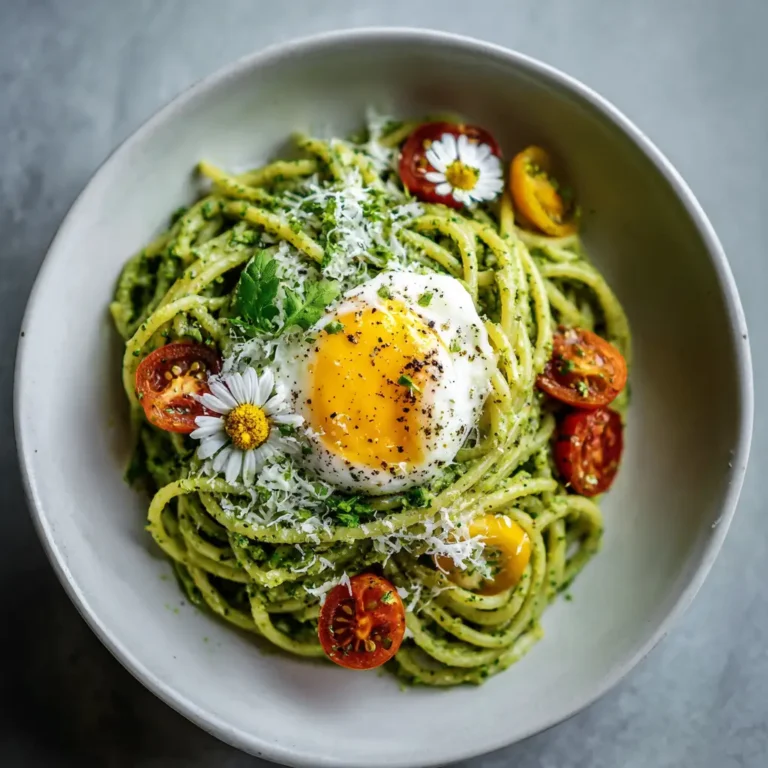Garlic Butter‑Roasted Salmon with Potatoes & Asparagus
Garlic Butter‑Roasted Salmon with Potatoes & Asparagus: A Flavorful, Nutrient-Rich One-Pan Wonder
If you’re searching for a wholesome, delicious, and visually stunning meal that’s as easy to prepare as it is satisfying to eat, look no further than Garlic Butter‑Roasted Salmon with Potatoes & Asparagus. This one-pan wonder brings together tender salmon fillets, crisp roasted potatoes, and vibrant asparagus spears—all kissed with a rich, aromatic garlic butter sauce. Not only does this dish deliver on taste, but it also offers a balanced nutritional profile rich in omega-3 fatty acids, fiber, vitamins, and essential minerals. Whether you’re cooking for a weeknight dinner or impressing guests at a weekend gathering, this recipe promises restaurant-quality results with minimal cleanup.
The History Behind the Dish
While there isn’t a single documented origin for Garlic Butter‑Roasted Salmon with Potatoes & Asparagus, its roots can be traced back through various culinary traditions across Europe and North America. Roasting fish with herbs and fats like butter or olive oil is a time-honored technique in Mediterranean cuisine, particularly in coastal regions of France, Italy, and Greece where fresh seafood is abundant. The use of garlic and butter as a flavor base is quintessentially French, reminiscent of dishes like beurre blanc or à la meunière, both of which highlight the elegance of simple ingredients elevated by proper technique.
Potatoes, introduced to Europe from the Americas in the 16th century, quickly became a staple due to their versatility and ability to grow in diverse climates. Roasted potatoes seasoned with herbs and fat are a classic side dish throughout Europe, especially in British and German cuisines. Asparagus, enjoyed since Roman times, gained popularity during the 18th and 19th centuries in French haute cuisine and English springtime feasts alike. When these elements—salmon, potatoes, and asparagus—are combined on a single sheet pan with garlic butter, they represent a modern fusion of tradition, convenience, and health-conscious cooking.
The one-pan roasting method itself has seen a surge in popularity over the past few decades, particularly with the rise of home cooks seeking efficient, flavorful meals without excessive prep or cleanup. This dish perfectly encapsulates that trend while maintaining deep culinary authenticity and sophistication.
Ingredients Breakdown: Why Each Component Matters
Every ingredient in this recipe plays a vital role—not just in flavor, but in texture, nutrition, and overall harmony. Here’s a detailed breakdown:
- Salmon Fillets: Rich in heart-healthy omega-3 fatty acids (EPA and DHA), high-quality protein, vitamin D, and selenium, salmon is the star of the dish. Its natural oils help it stay moist during roasting and absorb flavors beautifully.
- Yukon Gold Potatoes: Chosen for their creamy texture and slightly sweet, buttery flavor, Yukon Golds hold up well to roasting. They provide complex carbohydrates and potassium, offering sustained energy and supporting muscle function.
- Asparagus: Packed with fiber, folate, vitamins A, C, and K, and antioxidants like glutathione, asparagus adds freshness, color, and a delicate crunch when roasted just right.
- Unsalted Butter: Using unsalted butter allows you to control the sodium level. It provides richness and helps carry the garlic and herb flavors throughout the dish.
- Fresh Garlic: More than just a flavor enhancer, garlic contains allicin, a compound known for its anti-inflammatory and immune-boosting properties.
- Fresh Lemon Juice and Zest: Adds brightness and acidity, balancing the richness of the butter and enhancing the natural flavors of the salmon and vegetables.
- Fresh Herbs (Parsley and Thyme): Parsley contributes a clean, slightly peppery note and is rich in chlorophyll and vitamin K. Thyme brings earthiness and antimicrobial benefits.
- Olive Oil: A heart-healthy fat that aids in even browning and prevents sticking. Extra virgin olive oil adds a fruity complexity.
- Salt and Black Pepper: Essential seasonings that enhance all other flavors without overpowering them.
- Optional Red Pepper Flakes: For those who enjoy a touch of heat, red pepper flakes add a subtle warmth that complements the garlic and butter.
Step-by-Step Recipe
Follow these detailed steps to create a perfectly balanced, golden-brown, and aromatic Garlic Butter‑Roasted Salmon with Potatoes & Asparagus.
- Preheat Your Oven: Set your oven to 400°F (200°C). This temperature ensures even roasting—crispy exteriors with tender interiors.
- Prepare the Vegetables: Scrub 1 pound of Yukon Gold potatoes and cut them into ¾-inch cubes. Place them in a large mixing bowl. Trim the woody ends off 1 bunch of asparagus (about 1 lb) and cut the spears into 2-inch lengths. Add them to the bowl.
- Season the Vegetables: Drizzle 2 tablespoons of olive oil over the potatoes and asparagus. Add ½ teaspoon salt, ¼ teaspoon black pepper, 1 teaspoon dried thyme (or 1 tablespoon fresh), and the zest of half a lemon. Toss thoroughly until evenly coated.
- Arrange on Baking Sheet: Spread the vegetables in a single layer on a large rimmed baking sheet lined with parchment paper or lightly greased foil. This promotes even browning and prevents steaming.
- Roast Initial Vegetables: Place the tray in the preheated oven and roast for 15 minutes. This head start ensures the potatoes cook through before the salmon finishes.
- Prepare the Garlic Butter Sauce: While the vegetables roast, melt 6 tablespoons (¾ stick) of unsalted butter in a small saucepan over low heat. Add 4 cloves of minced garlic and sauté gently for 1–2 minutes until fragrant but not browned. Remove from heat and stir in 2 tablespoons of fresh lemon juice, 1 tablespoon chopped fresh parsley, and optionally ¼ teaspoon red pepper flakes.
- Prepare the Salmon: Pat 4 salmon fillets (5–6 oz each) dry with paper towels. Season both sides with ½ teaspoon salt and ¼ teaspoon black pepper. If desired, sprinkle with a pinch of smoked paprika or lemon pepper for extra depth.
- Add Salmon to Pan: After the 15-minute vegetable roast, remove the tray from the oven. Push the potatoes and asparagus to the outer edges to make space in the center. Place the salmon fillets skin-side down (if skin-on) in the middle of the pan.
- Brush with Garlic Butter: Spoon the warm garlic butter mixture generously over each salmon fillet, allowing some to drizzle onto the surrounding vegetables. Reserve a little for finishing.
- Final Roasting: Return the baking sheet to the oven and continue roasting for 12–15 minutes, or until the salmon flakes easily with a fork and reaches an internal temperature of 145°F (63°C). The potatoes should be golden and tender when pierced with a fork, and the asparagus bright green with slight caramelization.
- Rest and Garnish: Remove from the oven and let the salmon rest for 3–5 minutes. This allows juices to redistribute, keeping it moist. Drizzle with remaining garlic butter and garnish with additional chopped parsley and lemon slices.
- Serve Immediately: Plate each portion with a salmon fillet, a generous scoop of roasted potatoes, and a bundle of asparagus. Serve with extra lemon wedges on the side for squeezing.
Tips for Perfect Results Every Time
- Dry the Salmon: Moisture is the enemy of browning. Always pat salmon fillets dry before seasoning to ensure a better sear and prevent steaming.
- Uniform Cutting: Cut potatoes to the same size so they cook evenly. Smaller pieces may burn; larger ones may stay undercooked.
- Don’t Overcrowd the Pan: Use a large enough baking sheet (at least 15×10 inches) to allow air circulation. Overlapping ingredients steam instead of roast.
- Use Fresh Garlic: Pre-minced jarred garlic lacks freshness and can have a bitter aftertaste. Mince it yourself for optimal flavor.
- Butter Temperature: Don’t let the garlic butter boil—low and slow preserves its delicate aroma and prevents burning.
- Check Doneness Early: Ovens vary. Start checking the salmon at 10 minutes to avoid overcooking. It continues to cook slightly while resting.
- Skin-On vs. Skin-Off: Skin-on salmon holds together better during roasting and crisps up nicely. If you prefer skinless, reduce cooking time by 1–2 minutes.
- Line the Pan: Parchment paper makes cleanup effortless and prevents sticking without sacrificing browning.
- Lemon Timing: Add lemon juice toward the end of cooking to preserve its bright flavor—too much heat dulls citrus notes.
- Herb Substitutions: Rosemary, dill, or tarragon can replace thyme depending on preference. Dill pairs especially well with salmon.
Variations and Customizations
This recipe is highly adaptable to suit dietary preferences, seasonal availability, and flavor cravings. Here are several creative twists:
- Citrus Twist: Swap lemon for orange or lime. Orange pairs beautifully with honey-glazed variations, while lime gives a zesty Mexican-inspired flair.
- Herb Crust: Press a mixture of chopped herbs, breadcrumbs, and Parmesan onto the salmon before roasting for a crispy topping.
- Dijon Garlic Butter: Stir 1 tablespoon Dijon mustard into the garlic butter for a tangy, creamy finish.
- Cajun Style: Season salmon with Cajun spice blend and add bell peppers and onions to the vegetable mix.
- Asian Fusion: Replace butter with sesame oil and soy sauce, add ginger and scallions, and finish with a splash of rice vinegar.
- Keto-Friendly: Keep it low-carb by swapping potatoes for cauliflower florets or radishes.
- Vegetarian Option: Substitute salmon with marinated tofu or tempeh, adjusting cook time accordingly.
- Add Veggies: Include cherry tomatoes, zucchini, broccoli, or mushrooms for added color and nutrients.
- Creamy Finish: Drizzle with a dollop of herbed Greek yogurt or aioli just before serving.
- Wine-Infused: Deglaze the garlic butter with ¼ cup dry white wine for a more complex sauce.
Health Considerations and Nutritional Value
Garlic Butter‑Roasted Salmon with Potatoes & Asparagus is not only delicious but also nutritionally balanced. Here’s why it deserves a regular spot in a healthy diet:
- Omega-3 Fatty Acids: Salmon is one of the best sources of EPA and DHA, which support brain health, reduce inflammation, and lower the risk of heart disease.
- High-Quality Protein: Each salmon fillet provides about 30–40 grams of complete protein, essential for muscle repair and satiety.
- Fiber-Rich Vegetables: Asparagus and potatoes (with skin) contribute dietary fiber, promoting digestive health and stable blood sugar levels.
- Vitamins and Minerals: This dish delivers significant amounts of vitamin D, B12, selenium, potassium, vitamin C, vitamin K, and folate.
- Antioxidants: Garlic, lemon, and herbs contain compounds that combat oxidative stress and support immune function.
- Healthy Fats: Olive oil and butter (in moderation) provide monounsaturated fats and fat-soluble vitamins. Opt for grass-fed butter if possible for higher CLA content.
- Low Added Sugar: Naturally sweet ingredients like potatoes and lemon eliminate the need for refined sugars.
- Balanced Macronutrients: A typical serving contains approximately 45% fat, 30% protein, and 25% carbohydrates—ideal for sustained energy and fullness.
Nutritional Estimate per Serving (1 salmon fillet + 1 cup potatoes + ½ cup asparagus):
- Calories: ~520 kcal
- Protein: 38g
- Fat: 28g (Saturated: 10g)
- Carbohydrates: 27g (Fiber: 6g, Sugar: 4g)
- Sodium: ~450mg (varies with added salt)
- Omega-3s: ~2,000mg
- Vitamin D: ~15mcg (75% DV)
- Vitamin C: ~30mg (33% DV)
- Folate: ~120mcg (30% DV)
Note: Values are approximate and depend on specific ingredients used. To reduce fat or calories, substitute half the butter with broth or use a butter alternative. For lower sodium, omit added salt and use herbs and citrus for flavor.
Full Ingredient List
- 4 (5–6 oz) skin-on salmon fillets, center-cut
- 1 pound Yukon Gold potatoes, cubed
- 1 pound asparagus, trimmed and cut into 2-inch pieces
- 6 tablespoons unsalted butter
- 4 cloves garlic, minced
- 2 tablespoons fresh lemon juice (about 1 lemon)
- 1 teaspoon lemon zest
- 2 tablespoons olive oil
- 1 tablespoon fresh thyme leaves (or 1 tsp dried)
- 3 tablespoons fresh parsley, chopped
- ½ teaspoon sea salt (plus more to taste)
- ¼ teaspoon freshly ground black pepper
- Optional: ¼ teaspoon red pepper flakes
- Lemon wedges, for serving
Detailed Cooking Directions
- Preheat oven to 400°F (200°C). Line a large rimmed baking sheet with parchment paper or lightly grease with oil.
- In a large bowl, combine cubed potatoes and asparagus. Drizzle with olive oil, lemon zest, thyme, ½ tsp salt, and ¼ tsp pepper. Toss until evenly coated.
- Spread vegetables in a single layer on the prepared baking sheet. Roast for 15 minutes.
- While vegetables roast, melt butter in a small saucepan over low heat. Add minced garlic and cook for 1–2 minutes until fragrant. Do not brown. Remove from heat and stir in lemon juice, 1 tbsp parsley, and red pepper flakes (if using). Set aside.
- Remove pan from oven after 15 minutes. Push vegetables to the sides to create space in the center. Place salmon fillets skin-side down in the middle.
- Season salmon with salt and pepper. Brush generously with garlic butter, letting excess drip onto the vegetables.
- Return pan to oven and roast for 12–15 minutes, or until salmon is opaque and flakes easily with a fork.
- Remove from oven and let rest 5 minutes. Drizzle with remaining garlic butter and garnish with fresh parsley and lemon wedges.
- Serve immediately, dividing components evenly among four plates.
Frequently Asked Questions (FAQ)
Can I use frozen salmon?
Yes, but thaw it completely in the refrigerator overnight before cooking. Frozen salmon releases more moisture, which can affect texture and browning.
What kind of potatoes work best?
Yukon Golds are ideal for their creamy texture and buttery flavor. Red potatoes also work well. Avoid russets, as they can become too fluffy or dry.
Can I make this ahead of time?
You can prep the vegetables and garlic butter up to a day in advance. Store separately in the fridge. Assemble and roast just before serving for best texture.
How do I store leftovers?
Store cooled leftovers in an airtight container in the refrigerator for up to 2 days. Reheat gently in the oven at 300°F to preserve moisture. Avoid microwaving, which can make salmon rubbery.
Is it safe to eat salmon skin?
Yes, if properly cooked and sourced from reputable suppliers. The skin becomes crispy when roasted and contains additional healthy fats. Remove it if preferred.
Can I grill this instead?
Absolutely! Grill the salmon on a preheated, oiled griddle or in a foil packet. Roast the vegetables separately or on a second tray.
What sides pair well with this dish?
A simple arugula salad with vinaigrette, quinoa, crusty bread, or a cucumber-dill yogurt sauce all complement the flavors beautifully.
Why did my potatoes come out soggy?
Likely causes include overcrowding the pan, skipping the initial roast, or not drying the potatoes before oiling. Ensure even spacing and sufficient roasting time.
Can I use margarine instead of butter?
While possible, real butter provides superior flavor and browning. If avoiding dairy, use a plant-based butter with a high fat content.
Is this recipe gluten-free?
Yes, as written. Just ensure all added ingredients (like seasoning blends) are certified gluten-free if needed.
Summary
Garlic Butter‑Roasted Salmon with Potatoes & Asparagus is a nutritious, flavorful, and elegant one-pan meal that combines heart-healthy salmon, golden roasted potatoes, and tender-crisp asparagus in a luxurious garlic-lemon butter sauce. Easy to prepare and perfect for weeknights or special occasions, it delivers bold taste with minimal effort and cleanup.
